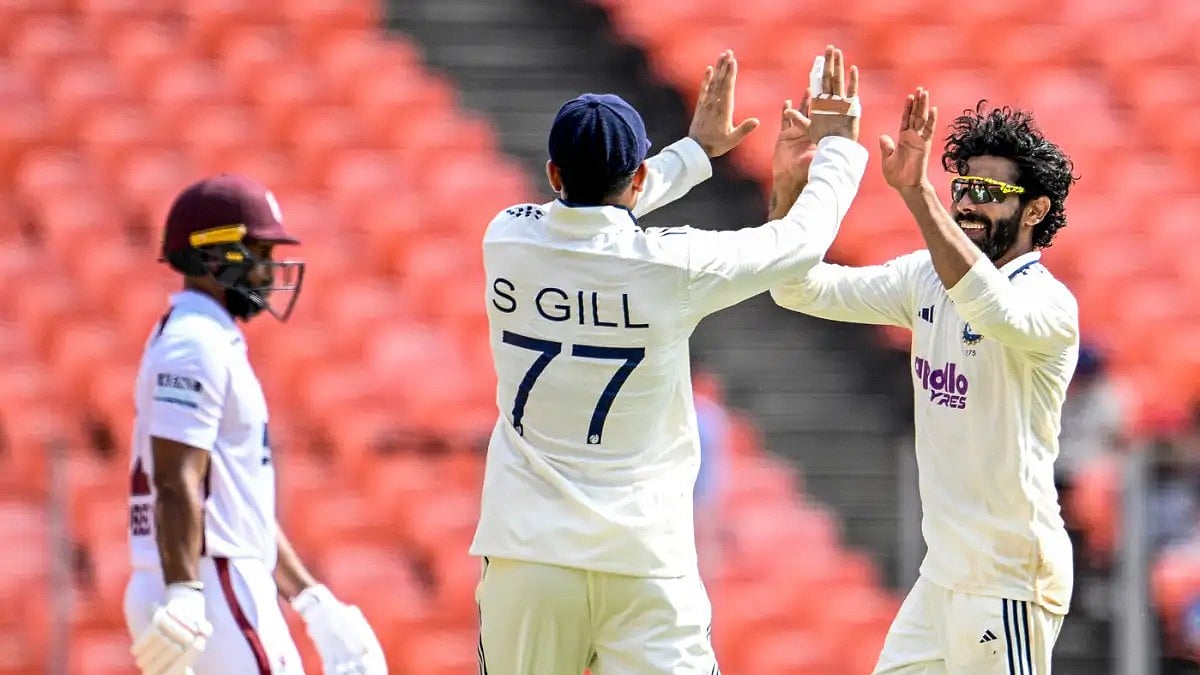Cricket
A walk in the park for India, but talk of two-tier Test structure surface again
Where will you bring the contest from, former cricketer Aakash Chopra asks on his YouTube channel

The quality of the contest in the first Test between India and the West Indies in Ahmedabad, not unsurprisingly, had been so poor that it hardly got the average cricket fan talking about it on Saturday. They were more interested about the seismic change in ODI leadership of Indian team and how the clock has begun ticking for the two white ball giants: Rohit Sharma and Virat Kohli.
The takeaways for India had been many – most important being restoration of their supremacy at home which got snapped after 11 long years after an embarrassing 3-0 whitewash at the hands of Tom Latham’s New Zealand in 2024. It was the third win in six matches for Shubman Gill & Co in the 2025-27 World Test Championship cycle, which keeps them in third position in the table with a 55.56 PCT.
At an individual level, Player of the Match Ravindra Jadeja showed he was in no mood to slow down at 36 and the elevated number six position has been helping him to plan his innings better. Keeping up with an amazing consistent run with the bat in England, Jadeja’s hundred was the third of the only Indian innings along with K.L. Rahul and Dhruv Jurel while his haul of four for 54 exposed the inadequacies of the Caribbean batters against top quality spin.
Published: undefined
The element of predictability in West Indies capitulation – time and again – has become such a norm that cricket media all over the world has become rather tolerant about it. There are no prizes for guessing that the BCCI sees such fixtures as a largesse to help out other cricket boards, but the problem is it turns out to be rather poor advertisement for a format already in danger. While the broadcasters will not be happy that the match was over inside three days while the empty Narendra Modi Stadium presented a sorry sight – despite the opening day being a national holiday for Gandhi Jayanti.
The appalling standard of West Indies batting brought back the case of a two-tier Test structure to the fore – even if that means ushering in a class distinction of sorts among the Test-playing nations. The WTC has, despite it’s faultlines, given the five-day format some kind of a context but then, the ability of compete in this format requires a kind of skillsets that needs years of exposure to develop – something sorely lacking in teams like the West Indies, Zimbabwe and even Pakistan.
Speaking at his own YouTube channel, former India opener Aakash Chopra didn’t pull back any punches. ‘’Now, should there be a tier system in Test cricket? This series acts a fuel to the fire in this conversation. The point of WTC was to bring excitement to the longest format, with teams battling it out for points, it feels nice to hear it. There is importance because teams want points, but where will you bring the contest from? You have not lost a Test to them in 20-22 years, so what contest?’’ he asked.
A piece of statistics on the top six batters of Windies is telltale – they have an average in the 20s. Tagenarine Chanderpaul, son of the prolific Shivnarine Chanderpaul known for his marathon efforts, tops them at 31.11 and these figures surely explain where the successors of the three Ws-- Clive Lloyd, Viv Richards and Brian Lara stand today.
Captain Roston Chase has naturally harped on the need of doing better in the second and final Test in New Delhi, but the question is do they have the wherewithal to do it? One has to wait and watch!
Published: undefined